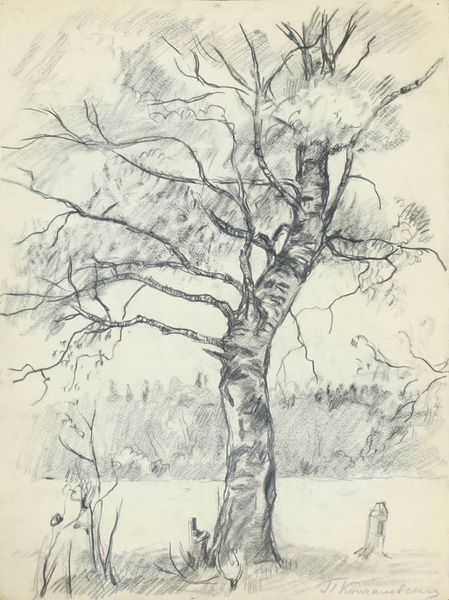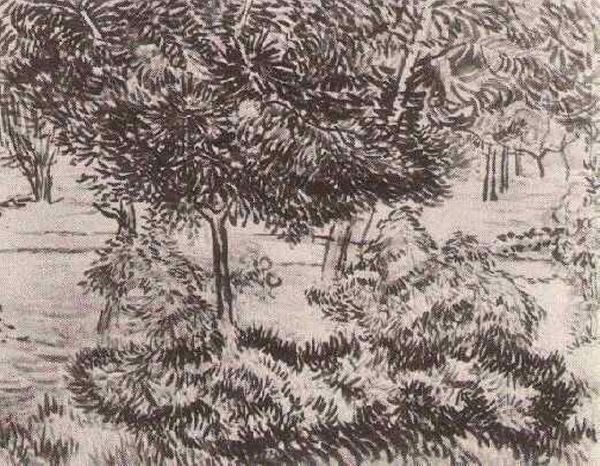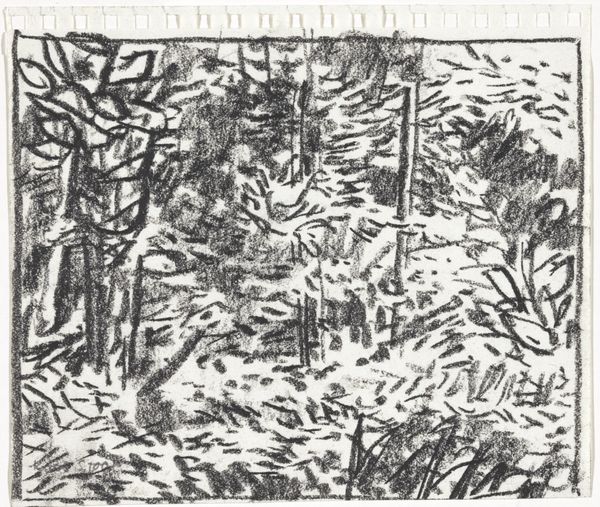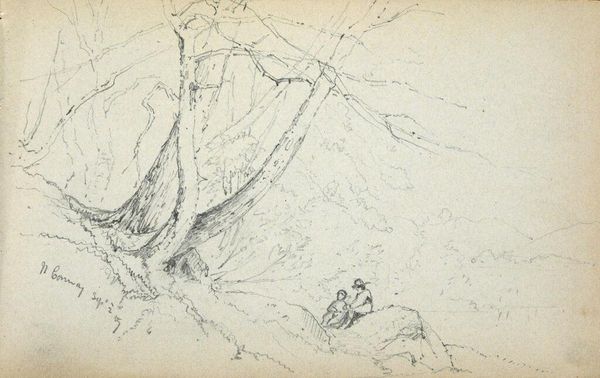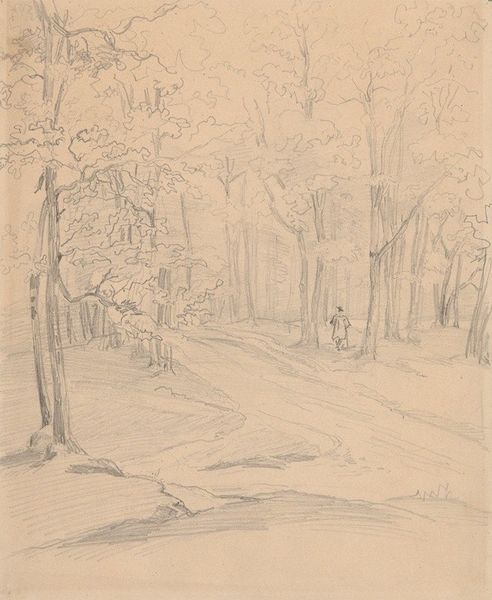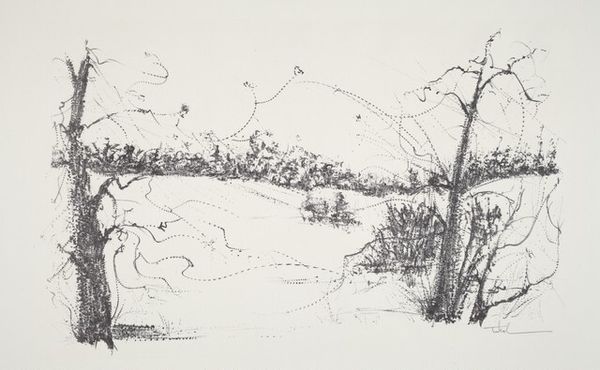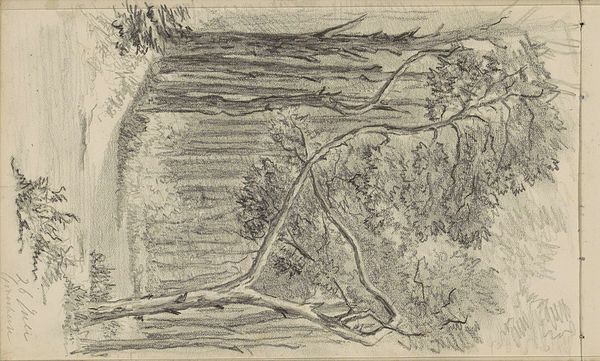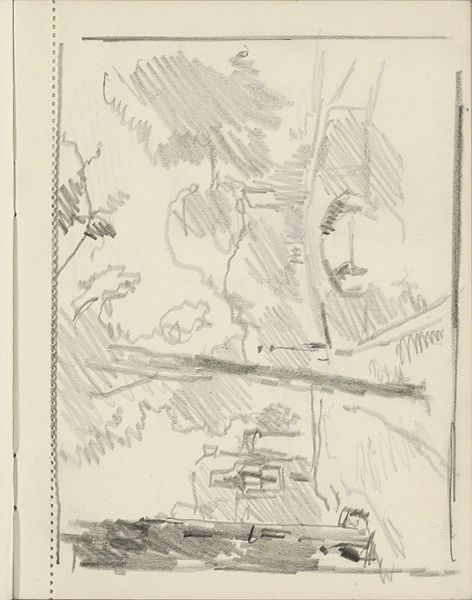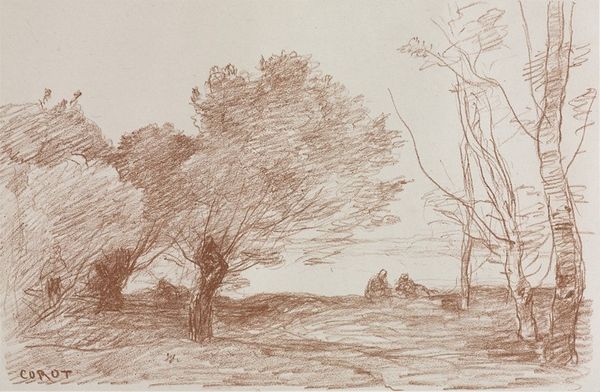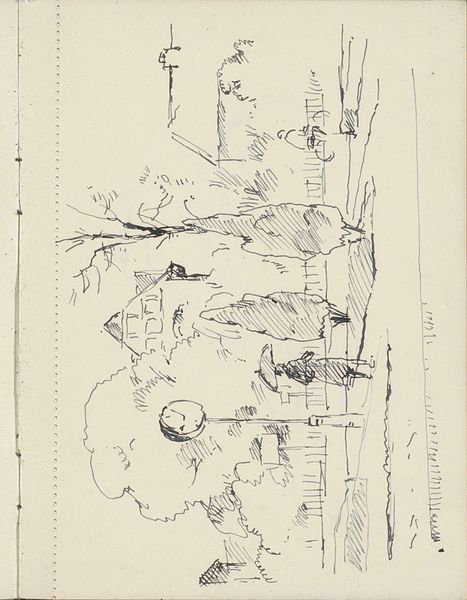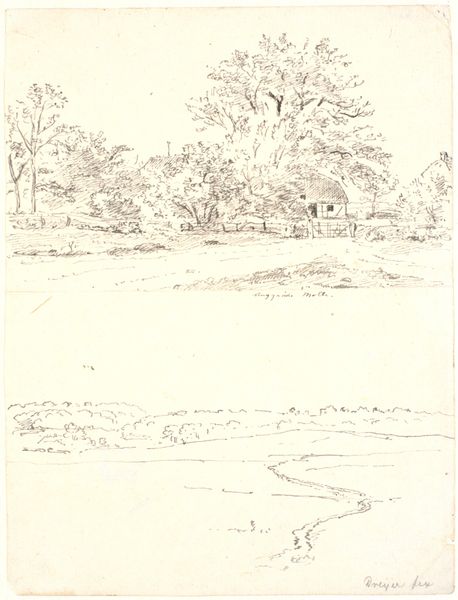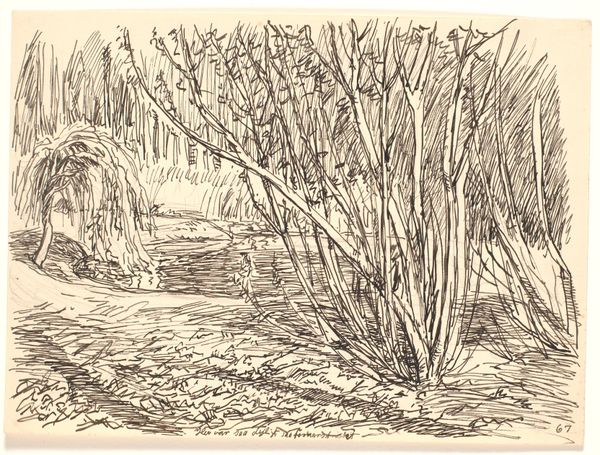
Copyright: Kmetty János,Fair Use
Editor: So, this is "City Park" by Kmetty János, from 1910. It's an ink drawing and there's a very abstracted feel, even though you can definitely tell it's a landscape. It seems to capture a fleeting moment. What's your take on it? Curator: It's fascinating how Kmetty János captured a modern urban space with this ink drawing, particularly given the socio-political context of the early 20th century. The impressionistic strokes combined with the abstraction suggest an embrace of modern life. What kind of public spaces were emerging at the time, and how did these influence artists? Editor: Good point! I hadn't really thought about the role of city parks then. Was it about making nature accessible to city dwellers and escaping industrial life? Curator: Precisely. City parks were being designed as deliberate spaces of social interaction and recreation, and often acted as deliberate escapes for a population increasingly surrounded by concrete and industrial noise. Consider the subjects chosen: there's leisure, class, nature. Who has access to such spaces? Does the medium itself, ink drawing, offer a particular perspective on this changing social landscape, compared to say, oil painting? Editor: That's a great perspective! Ink is quick, replicable, democratic almost? And by choosing to depict these everyday scenes, he's subtly commenting on the shifts in society and access to leisure. Curator: Exactly. Think about how art institutions then were grappling with what constituted 'high' art and who it was for. János’ work, in its subject and medium, subtly challenged those boundaries. Editor: This conversation really opened my eyes to the historical narrative embedded in such a simple drawing. It makes me wonder about who decides which images get to represent public life! Curator: And how our interpretation shapes that narrative. Art is never just aesthetic; it's a reflection of the world around it.
Comments
No comments
Be the first to comment and join the conversation on the ultimate creative platform.
